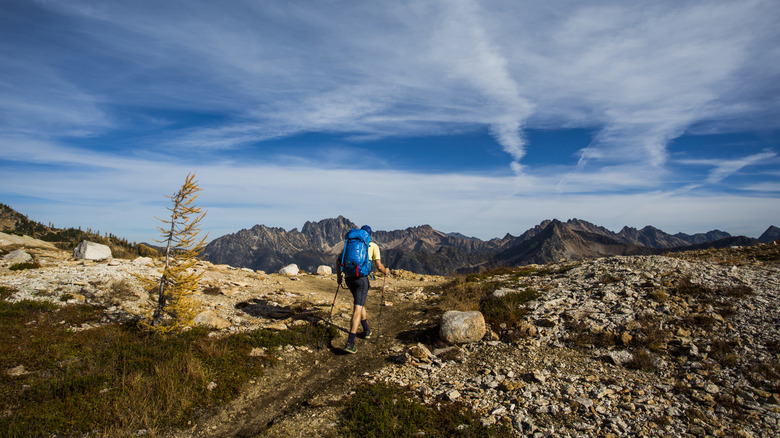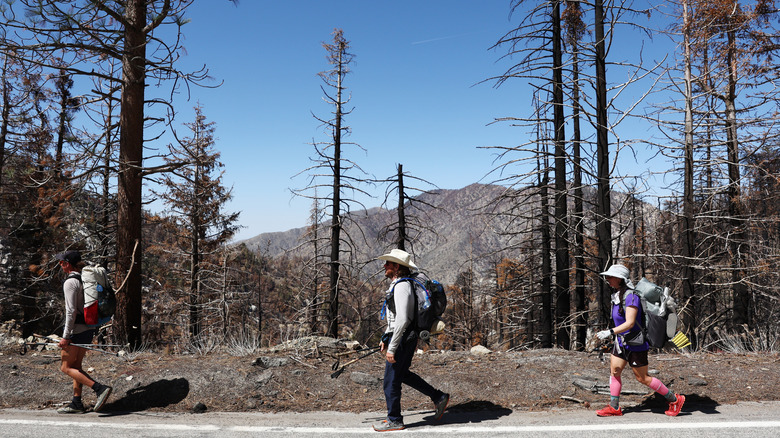Why The Sale Of Public Lands In California, Oregon, & Washington Could Spell The End Of The Pacific Crest Trail
"America the Beautiful" could look a lot less beautiful under the next rendition of the One Big Beautiful Bill Act (OBBBA) curried by the Trump administration. In its most recent proposal, the bill directed the U.S. government to sell up to 3.3 million acres of public lands in 10 western states and Alaska. Although proponents of the bill, like Senator Mike Lee (R-UT) claim that this action is not intended to touch U.S. National and State Parks or other designated properties, the bill's language did not discount the possibility that the government could sell vital public lands. This infuriated both politicians and wildlife enthusiasts across both parties because parcels of land near some of the nation's most popular parks, monuments, sacred sites, and trails — like the Pacific Crest Trail — could be put on the market.
The problem with this is that, even if the protected lands stayed safe and unsold, public-owned lands that allow access to these protected areas would be in the firing line. And while the Senate has now determined that said version of the OBBBA would violate Congressional rules, Senator Lee later announced on X that he's still working to push the bill forward without any reduction to the quantity of land for sale. If this bill does go through, it could be a serious risk to the Pacific Crest Trail (PCT), as it passes through the western states of Washington, Oregon, and California, surrounded by areas of land managed by the U.S. Forest Service, much of which is at risk of being sold.
How selling lands near the PCT would affect the trail
As a National Scenic Trail, the PCT itself theoretically has the required special designation needed to avoid sale under the previous OBBBA proposal. However, other nearby access points (for instance, connecting trails that allow day hikers to do sections of the trail or stretches of land near hiker resupply depots) could become privatized, hindering hikers or entirely stopping them in their path and forcing them to reroute who-knows-how-many miles out of their way — an enormous sacrifice for someone traveling on foot. Depending on the quality of terrain (given that the PCT famously traverses the high-rising crests of mountain ranges), new paths may not even be plausible, nor possible, in certain places. And what is a thru-hike when the ability to hike all the way through it becomes unmanageable?
On top of this, advocates for the underrated but stunning (and less crowded) Continental Divide Trail made a point which holds true for the PCT as well: Given that the bill allows the government to sell land so close to the trail, many of the scenic vistas that make it popular and memorable could also be ruined once real estate replaces nature. Combined with the challenge of the terrain, the PCT's panoramic views are part of what has made completing it a beloved rite-of-passage among seasoned American thru-hikers for the last 50 years. Additionally, the sale of certain areas near the trail could make it more dangerous. As it stands, there's no provision in the bill against maintenance and emergency response access points getting bought off by private landowners. There are already enough horrifying reasons hikers vanish on the PCT, and having more limited access to aid will certainly make tragedy more likely.
What the future holds for the Pacific Crest Trail
Because the new version of the OBBBA has yet to be put forward, as of this writing, the future of the PCT remains uncertain. If the land around the trail is sold, it would drastically affect the experience and possibility of completing this historic thru-hike. Furthermore, because the bill includes language that makes it so there would be no reviews or public hearings before the sales — neither Congress, nor the Supreme Court, nor environmental leaders would have a say in which parcels get purchased. There would also be no way to regain these public properties once parceled out.
Senator Lee has specified his intent is to propose a revision in which land can only be sold within 5 miles of population centers. This may initially sound more reasonable, but the risk is that as population centers expand, more land could become eligible for sale. Because of this, such language could give even less protection to the public lands in question. With the Trump administration seemingly taking aim at public lands of all kinds, there is a lot of uncertainty surrounding exactly which areas will remain public and protected.
Furthermore, in an opinion from May 27, 2025, the Department of Justice argued that sitting presidents "have the authority to de-designate monuments and to reduce parcels associated with existing monuments." While national monuments are different from protected trails, the ability of a sitting president to reduce or de-designate protected areas like Devils Tower, America's first national monument, could clear the way for other designated national sites to be reduced or sold in the same way in the future. This could eventually also include protected areas like national parks or the Pacific Crest Trail.


